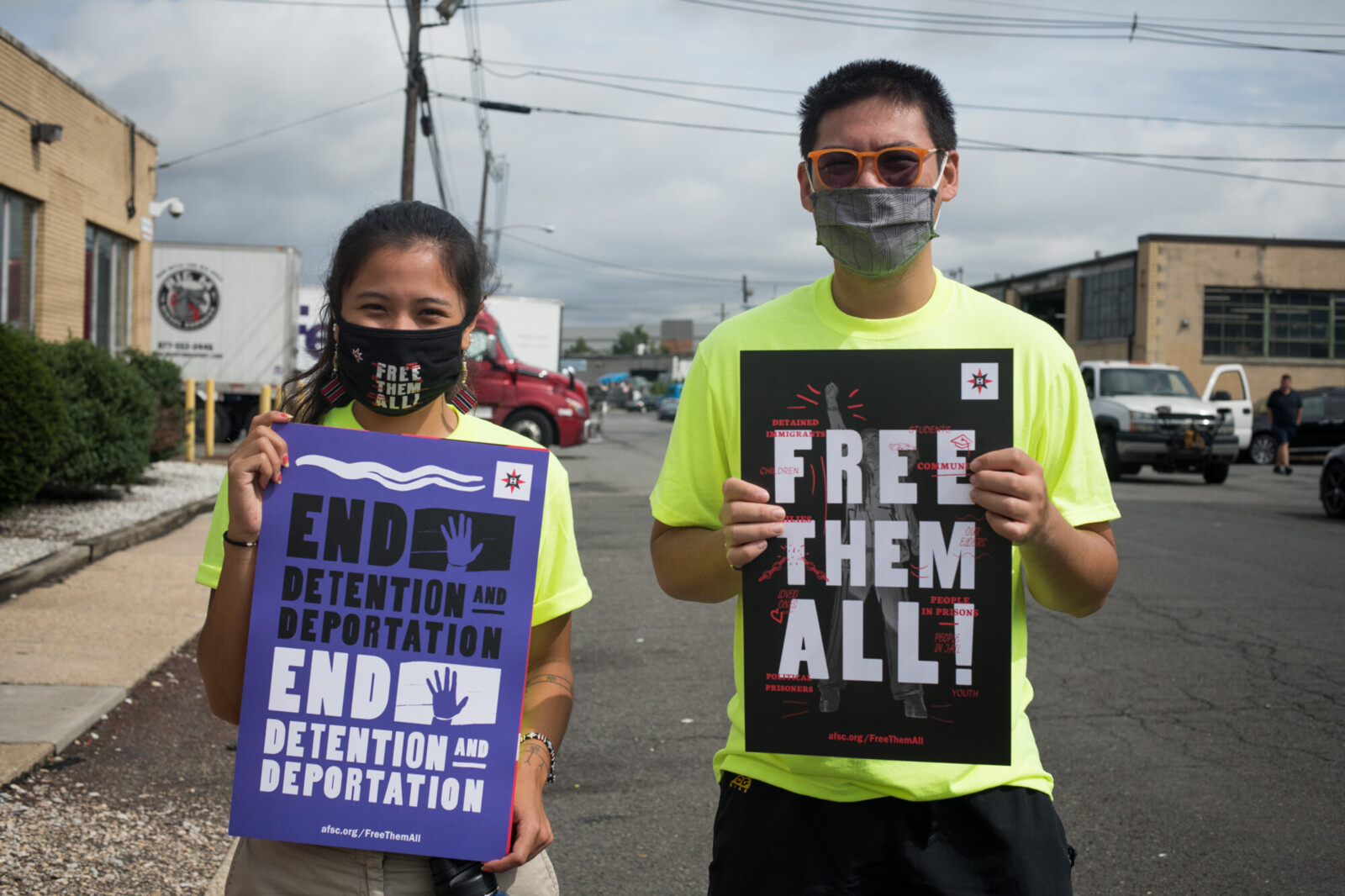
The surging number of COVID-19 cases in U.S. prisons, jails, and detention centers has magnified the dangers and abuses of incarceration—fueling the call to #FreeThemAll and a demand for systems that actually support safety and healing.
Most of us know that incarceration does not keep us safe, but how do we talk about alternatives to our current criminal punishment system with folks who may not know what to do instead? Framing this issue in terms of shared values—instead of statistics—is critical, but how do we do that when we’re talking to others?
AFSC recently conducted a national study of U.S. progressives, Democrats, political moderates, and left-leaning independents, where we tested several ways of talking about this critical issue. Here are the top takeaways from that study, to help you shape your advocacy, messaging, or outreach:
DO emphasize amount of money wasted on incarceration—and the many community investments that we could make instead.
Out of all of the messages that we tested, this is the one that worked the best with the broadest audience.
For example, frame the issue like this:
- The amount of tax dollars spent on prisons, jails and detention every year is staggering! I think it would be better spent on things communities need, like education and jobs.
- Prisons, jails, and immigration detention centers waste billions of taxpayer dollars every year. Taxpayers in the U.S. spend about $80 billion annually keeping people in cages and yet violence continues to rise.
- This diverts funds from essential services and community-led programs that address the root causes of violence.
- It would make way more sense to spend money on things that reduce crime—like education and economic opportunities—than spending money locking people up.
DO emphasize that prisons, jails, and detention centers do not keep us safe.
Despite the extraordinarily high incarceration rate in this country, we continue to experience incredibly high rates of violence in our communities.
The fact that incarceration does not keep us safe was the second-most compelling message among the many that we tested.
Consider using language like:
- This country warehouses 2.3 million people—disproportionately people of color and poor people—while doing little to stop harm or help survivors of violence and communities heal.
- Incarceration doesn’t keep us safe. The U.S. has the highest incarceration rate in the world and yet has incredibly high rates of gun violence.
DO frame the problem in terms of systemic racism.
Our study showed that the people in our sample understood that the criminal punishment system is deeply racist. It also showed that emphasizing the systemic racism of this system is a compelling way to frame this issue.
Try framing the conversation in this way: "In the U.S., Black people are imprisoned at five times the rate of white people. This level of racial disparity in the system is unacceptable and must be addressed. Racism has no place in our society.
DO describe what we think SHOULD happen in as much detail – and in the simplest language – as possible.
Our study showed broad support for alternatives to incarceration, but it also showed that most people do not have a detailed or nuanced idea of what those alternatives are. They are curious about what these could be and respond positively when we use plain, jargon-free language to paint as clear a picture of alternatives like restorative justice and transformative justice solutions.
Survey respondents responded positively to statements like “The person who experienced violence is given the resources they need to heal emotionally and physically. The person who perpetrated the violence is held accountable and required to make amends to those they harmed. That person is also offered support to address the underlying causes that led them to commit the violent act. “
Without plain-language descriptions of the many alternatives that are out there, listeners are likely to imagine things like house arrest or ankle monitors rather than community-led processes that bring about deep, authentic healing. For some concrete examples of humane alternatives that are working, check out the Creative Intentions Toolkit, Project NIA, and Common Justice.
DO talk about “the toughest cases.”
It can be especially difficult to talk about the tough cases – people who have committed serious acts of violence, for example. But our study showed that it’s most important to be specific, clear, and jargon-free when talking about the toughest cases.
If we don’t address these concerns as advocates and communicators, audiences are very likely to either assume that we are only talking about lower-level offenses like drug crimes, or to shut down altogether.
One way to frame this conversation is to talk about community-led, community-based re-entry programs for people currently serving life- or long-term sentences: “Harsh sentencing laws need to be changed to give those serving long-term or lifetime sentences the opportunity to rejoin their families and communities. We should create systems of community-based reentry and support so that people can successfully come home.”
Building support for the call to #FreeThemAll is long-term work that will take organizing and policy change at all levels. These messages are just one starting point to build broader support for this critical issue.
This research would not have been possible without the leadership and collaboration of many organizations: Black Alliance for Just Immigration, Community Justice Exchange, Critical Resistance, Detention Watch Network, Movement for Black Lives, National Immigrant Justice Center, and United We Dream.